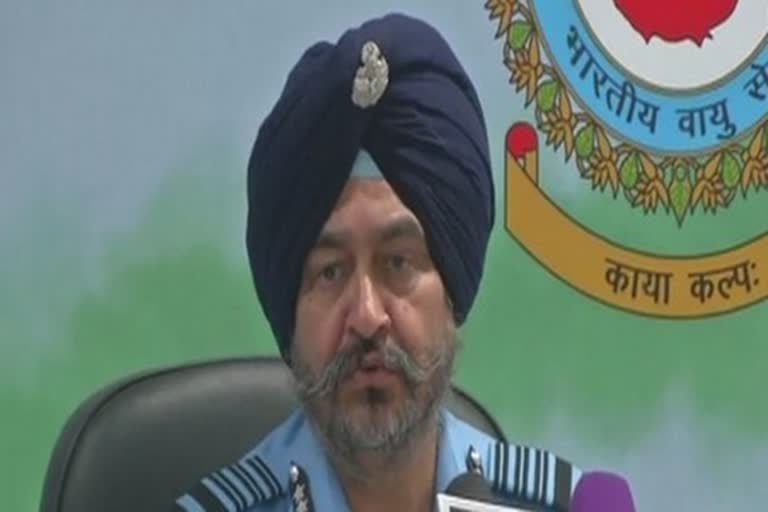New Delhi: Referring to the 27 February aerial fight with Pakistan following the Balakot air strikes, Air Chief Marshal BS Dhanoa on Monday said the results would have been further skewed in favour of India if it had inducted the Rafale combat aircraft in time.
"The results would have been further skewed in our favour had we inducted our Rafale aircraft in time," said Dhanoa while delivering the Arjan Singh memorial lecture in IAF auditorium in Subroto Park here earlier today.
Elaborating on the February 26 air strike in Balakot in Khyber Pakhtunkhwa province in Pakistan, the Air Chief Marshal said, "In the Balakot operations, we had technology on our side as we could launch precision standoff weapons with great accuracy. In the subsequent engagement, we came out better because we had upgraded our MiG-21 Bisons and Mirage-2000 aircraft."
"With the proposed induction of Rafale and the S-400 SAM system in the next two to four years would once again tilt the technological balance in our favour, like it was in 2002 during Operation Parakaram," he added.
Dhanoa further said, "Post our strike on terror training camp, to thwart impending strike on our soil, Pakistan Air Force (PAF) launched a riposte on February 27 against Indian military targets. Did they succeed in their objective? The answer is a clear 'no' as the attack was thwarted while we achieved our objective in Balakot."
Referring to the 1965 war, Dhanoa took a jibe at Pakistan saying it had "lost half the country", despite the fact that the IAF had lost 59 aircraft compared to 43 of PAF aircraft.
"A lot was written and talked about the measure of victory. How many aircraft did we lose and how many Pakistani's lost and counting that whether we won or not? Well in 1965, Pakistan started the war with a clear cut aim of annexing Jammu and Kashmir through military means. It lost because it couldn't do so. IAF played a major part in thwarting the armoured thrust in the Chamb-Jaurian sector. In the ensuing air battles as per official history, IAF lost 59 aircraft compared to 43 of the PAF," he said.
"But this does not measure victory. You win or lose on how much of your politico-military objectives were achieved. Even post the 1971 War, the PAF books emphasised that PAF came better off as they lost lesser aircraft compared to the IAF. You lost half your country for God's sake. So what difference does it make if you lost a fewer aircraft even if we were to believe your version!" Dhanoa underlined.
The Air Chief Marshal said that the IAF demonstrated its capability to strike with precision both during day and night in Exercise Vayushakti in February.
"All this works towards our conventional deterrence. The strike on a non-military target with precision at night deep inside Pakistan demonstrates our ability to hit the perpetrators of violence in our country, wherever they may be," Dhanoa said, while adding "that it is the critical demonstration of our national will and capability which is the major lesson coming out of the present crisis."
Dhanoa said that the IAF's modernisation programme is to progressively absorb technology through indigenisation in the long-run.
"At the beginning of the century, we realised the need to procure fourth generation fighter aircraft to meet the projected shortfalls in aircraft strength caused due to delays in our indigenous LCA project. To be fair with our premier Aeronautical Development Agency, building an aircraft was no easy proposition. There are only a handful of countries that have the capability to manufacture a fighter aircraft end-to-end on their own as aviation requires exacting standards and cutting edge technologies," he said.
Also read: Fight continues in Tripoli
Underlining the technological gap in making indigenous aircraft, Dhanoa said that the IAF's progress in making ALH and LCA was slow and tedious marred by restrictions on procuring advanced technologies from other countries.
"We simultaneously commenced projects to upgrade our existing warfighting equipment. A stellar example has been the upgrade of Mig-21, MiG-27, Jaguar and MiG-29 aircraft. A large portion of key avionics and EW equipment placed on these aircraft has been indigenously designed and manufactured. It is our confidence in these upgradations which yielded results on February 27 this year," he said.



